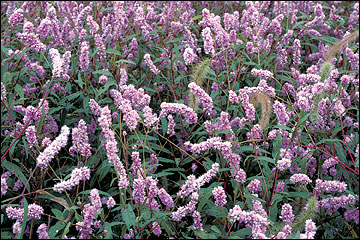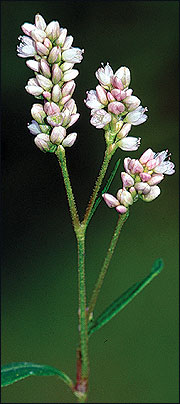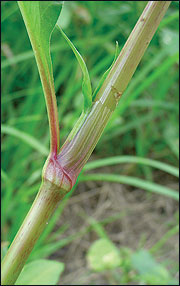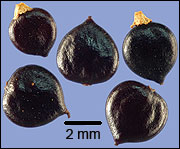Smartweed
- Polygonum spp.
- Buckwheat, Knotweed, Water pepper
Forb
With adequate moisture, smartweed often forms extensive colonies. Flowers may be pink or white, depending on species.
Missouri Department of Conservation
Description
More than two dozen species of smartweeds are found in the Midwest, many of them quite commonly. Both annual and perennial species thrive in wet or moist soils and in early-successional plant communities. Annual smartweeds are prolific seed producers and are consumed by a wide variety of birds and other wildlife. The genus name Polygonum means "many knees," a reference to the abundant, swollen nodes where the leaf meets the stem. Leaves are simple, alternate and parallel-veined; most are lanceolate. Flower clusters are white or pink, and at maturity the plant yields large numbers of seeds. In the fall, the stems are easily recognized by their angular joints and reddish color.
Bloom period
May to November
Use by bobwhites
Bobwhites, like many other birds, may consume large quantities of smartweed seeds. In addition, smartweed communities may be used as brood-rearing habitat.






